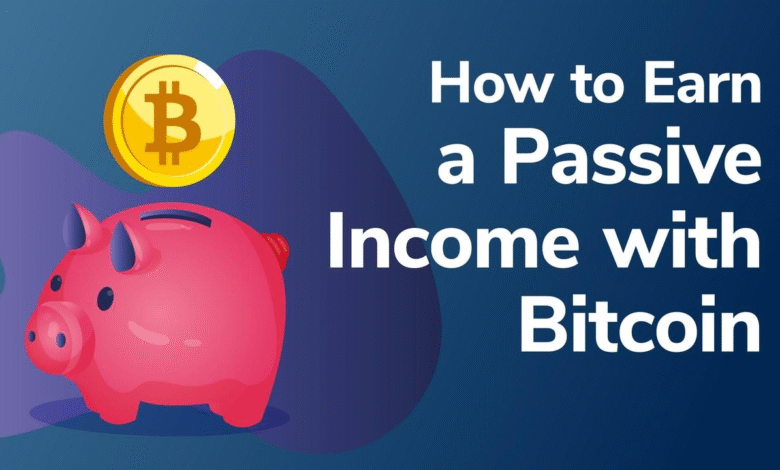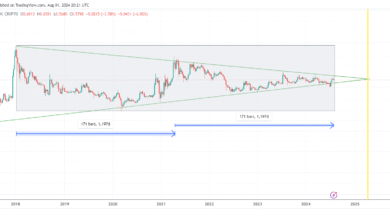Bitcoin Passive Income: Top Methods You Should Know

Bitcoin passive income is rapidly becoming a favorite topic among cryptocurrency enthusiasts, as the desire to earn while holding assets grows stronger. Traditionally, generating yields from Bitcoin deposits through lending has faced challenges, but innovative solutions are now emerging in the decentralized finance (DeFi) space. From Bitcoin staking to lending protocols, investors can explore various avenues to earn passive income with Bitcoin. With DeFi Bitcoin evolving, strategies such as Stacks (STX) and Rootstock (RSK) are making headlines by allowing users to tap into the potential of yield farming and liquidity pools. In this article, we will dive into the latest methods that enable Bitcoin holders to not just store their assets but also grow them over time.
Exploring the realm of Bitcoin’s earning potential, many are turning toward decentralized finance options that facilitate income generation without active trading. Terms like cryptocurrency yields, DeFi strategies, and Bitcoin lending mechanisms are gaining traction as more individuals look for reliable methods to maximize their cryptocurrency investments. With advancements in Bitcoin staking and lending platforms such as Stacks and Rootstock, opportunities for passive income have expanded significantly. Investors are now able to leverage their Bitcoin holdings through innovative protocols, paving the way for a new era in finance where traditional investment barriers are dismantled. As we delve deeper, we’ll examine how these new avenues can transform your Bitcoin assets into a source of continuous earnings.
Understanding Bitcoin Passive Income Opportunities
Bitcoin’s rise has paved the way for innovative methods of generating passive income, particularly through decentralized finance (DeFi). This growing trend allows investors to earn returns on their Bitcoin holdings without direct trading. Unlike traditional methods that relied on lending platforms that usually demanded a leap of faith, contemporary protocols leverage the inherent decentralized nature of Bitcoin. Thus, investors can explore options like lending, staking, and yield farming while maintaining control of their assets.
A significant factor in the appeal of Bitcoin passive income opportunities is the promise of high returns. For instance, some strategies claim APYs of up to 8% or more, which is notably attractive in the relatively low-yield environment of traditional finance. As DeFi protocols continue to mature, the infrastructure supporting Bitcoin investments becomes more robust, offering both security and potential profitability to those willing to navigate its nuances.
The Rise of Bitcoin Staking Solutions
While Bitcoin traditionally operates on a proof-of-work model, requiring miners to validate transactions, staking is an alternate method of generating rewards that has gained traction recently. Protocols like Stacks (STX) employ a unique mechanism called Proof-of-Transfer (PoX) to enable users to stake their Bitcoin indirectly, earning STX tokens in return. This innovative model allows Bitcoin holders to gain yields without the cumbersome demands of trading or keeping hair-raising tabs on market fluctuations.
As Bitcoin staking becomes more recognized, the total value locked (TVL) in these protocols is climbing steadily, signaling a shift in investor interest. Although, with only 0.3% of Bitcoin locked into DeFi, there’s immense potential for growth. Platforms utilizing the security of Bitcoin while permitting smart contract executions could be the key to unlocking substantial price appreciation and fostering user confidence in the crypto marketplace.
Exploring Stacks (STX) as a Bitcoin Staking Layer
Stacks (STX) has emerged as a popular layer-2 solution offering opportunities for earning returns on Bitcoin holdings. By utilizing PoX, Stacks rewards Bitcoin miners who assist in processing transactions on its own chain, creating a symbiotic relationship with the main Bitcoin network. This means that investors not only stake their STX tokens for Bitcoin yields but also engage in a broader ecosystem designed to enhance Bitcoin’s utility.
Despite the low price of STX relative to its all-time highs, the projected yields can still appeal to long-term holders of Bitcoin who wish to explore alternative income sources. However, the necessity to hold STX can act as a barrier, potentially limiting participation from retail investors. This limitation highlights the need for educational resources and accessible wallet options to enable broader participation in Bitcoin staking.
Rootstock (RSK) and Its DeFi Potentials
Rootstock (RSK) stands out as another integral player in the landscape of Bitcoin DeFi solutions. Positioning itself as a sidechain that supports smart contracts, RSK offers decentralized finance through protocols like Sovryn. By allowing users to leverage Bitcoin for lending and liquidity pools, RSK enables engaging without losing control over one’s private keys, a central concern in the DeFi space.
The flexibility offered by RSK through its compatibility with Ethereum’s smart contracts makes it a powerful tool for investors looking to diversify their passive income streams. It allows Bitcoin holders to engage in yield farming without the complexities of Ethereum, appealing to those who hold substantial Bitcoin assets and seek returns without converting to other cryptocurrencies.
Living the BOB Life: Next-Gen Bitcoin Opportunities
As a newer entrant to the Bitcoin staking arena, Build on Bitcoin (BOB) has started to carve a niche with its innovative features. This sidechain provides compatibility with Ethereum, allowing seamless interaction with existing DeFi strategies while maintaining the stability associated with Bitcoin. By introducing newly minted BTC to DeFi protocols, BOB aims to capture a portion of the market overlooked by established players.
With ongoing developments in liquidity pools and potential yield farming opportunities, BOB has sparked interest among forward-thinking investors. Airdrops and community incentives have the potential to draw participants eager to explore how Bitcoin can generate income through decentralized channels, reflecting a promising narrative in the larger crypto landscape.
The Importance of Security in Bitcoin Passive Income
With the innovative methods for earning passive income using Bitcoin, the aspect of security cannot be overstated. Each protocol aims to maintain the decentralization that Bitcoin is renowned for while providing robust security measures against potential breaches. Users should prioritize platforms that guarantee strong encryption and user anonymity to ensure their Bitcoin investments are protected.
The decentralized nature of Bitcoin also plays an essential role in enhancing security. Unlike traditional finance, where intermediaries can pose risks, DeFi allows users to interact directly with smart contracts, which can mitigate certain vulnerabilities. However, it remains vital for users to remain educated and cautious about the protocols they choose to engage with, as the DeFi space can often be fraught with risks ranging from simple bugs to complex exploits.
Navigating Bitcoin Lending Protocols for Passive Income
Bitcoin lending protocols serve as an attractive avenue for investors seeking passive income without actively trading. These protocols allow users to lend their Bitcoin in exchange for interest, opening up new revenue streams. Borrowers can pledge Bitcoin as collateral while the lenders maintain ownership of their assets, reducing the risk of losing control over their holdings.
The yield that comes from lending platforms can vary widely depending on market conditions and protocol popularity. As the DeFi landscape continues to evolve, investors have the chance to explore multiple lending options, increasing their potential earnings while diversifying their portfolios. Engaging with reputable protocols will be vital for generating sustainable profits in a rapidly changing environment.
Evaluating Returns from Bitcoin Passive Income Strategies
When considering Bitcoin passive income strategies, evaluating the potential returns is essential for making informed investment decisions. Tools like yield calculators can provide insights into what different protocols might offer, helping investors identify opportunities that align with their risk tolerance and financial goals. Understanding how to balance returns against the level of risk involved will be crucial for sustainable income.
Each method of earning passive income through Bitcoin carries its unique risk factors, from market volatility to protocol vulnerabilities. Investors should stay updated on market trends and shifts, as these can significantly impact yield potential. By approaching these strategies systematically and informedly, users can capitalize on opportunities while protecting their investments.
The Future of Bitcoin in DeFi: Trends and Predictions
The future of Bitcoin within decentralized finance looks promising as more protocols emerge, aimed at capitalizing on the growing interest in passive income. Analysts predict that the amount of Bitcoin locked in DeFi will increase, leading to greater liquidity and more extensive services, such as decentralized exchanges and lending platforms tailored specifically for Bitcoin.
As technology advances, so too will the methodologies for integrating Bitcoin into the broader DeFi landscape. Improved interoperability with other blockchains may allow Bitcoin holders to engage in complex financial products, making Bitcoin an even more versatile asset within the crypto ecosystem. The growth of Bitcoin in DeFi will likely reshape investor strategies and foster a new era of crypto finance.
Frequently Asked Questions
What are the best ways to generate passive income with Bitcoin?
To generate passive income with Bitcoin, consider using Bitcoin lending protocols, staking via platforms like Stacks (STX), or participating in DeFi Bitcoin practices. These options allow you to earn interest on your Bitcoin holdings, often providing returns in BTC.
How does Bitcoin staking work, and can I earn passive income with it?
Bitcoin staking isn’t traditional since Bitcoin operates on proof-of-work. However, you can stake Stacks (STX) tokens to earn yields in Bitcoin, leveraging the Proof-of-Transfer mechanism within a layer-2 protocol.
What is DeFi Bitcoin and how can it help me earn passive income?
DeFi Bitcoin refers to decentralized finance projects that allow Bitcoin holders to earn yields or interest. By using platforms like Rootstock (RSK) or Sovryn, you can lend your Bitcoin, engage in liquidity pools, or take loans while earning passive returns.
Can I earn passive income through Bitcoin lending protocols?
Yes, Bitcoin lending protocols allow you to earn passive income by lending your Bitcoin to borrowers. Protocols like Sovryn let you use your Bitcoin as collateral for loans or deposit it in lending pools for interest, sometimes yielding over 6% APY.
What are the potential returns when using Stacks (STX) for Bitcoin passive income?
When using Stacks (STX) for passive income, participants can earn yields of up to 7.5% paid out in Bitcoin. This involves staking STX tokens, which are linked to the Bitcoin blockchain through a Proof-of-Transfer model.
What are the advantages of using Rootstock (RSK) for earning passive income with Bitcoin?
Rootstock (RSK) allows you to earn passive income through Bitcoin lending and trading while retaining control of your private keys. It also offers no minimum deposit time for lending pools, making it more accessible for users.
Are there any risks associated with earning passive income with Bitcoin?
Yes, risks include market volatility, the security of the lending platform, and potential smart contract vulnerabilities, especially on newer DeFi protocols. Always do thorough research and understand the mechanics before participating.
Is it worth exchanging Bitcoin for STX to participate in staking?
Exchanging Bitcoin for STX to participate in staking may incur opportunity costs, as BTC currently has a higher yield. However, if you believe in Stacks’ potential and can handle the required minimum deposit, it could still be a valid investment.
How can I start earning passive income with Bitcoin today?
To start earning passive income with Bitcoin, create an account on a platform that supports Bitcoin lending or DeFi protocols like Stacks or Rootstock (RSK). Ensure you have a compatible wallet and understand the terms of engagement to maximize your returns.
| Key Point | Details |
|---|---|
| Bitcoin Passive Income | Bitcoin is seeing new decentralized protocols that enable passive income through lending and yield farming. |
| Staking Market | Currently, Bitcoin’s staking rate is about 0.3%, far behind Ethereum’s 27%. |
| Stacks (STX) | Stacks utilizes Proof-of-Transfer (PoX) to link with Bitcoin, offering yields up to 7.5% paid in Bitcoin. Entry barriers exist due to STX price and minimum staking requirements. |
| Rootstock (RSK) and Sovryn | RSK allows Bitcoin lending and trading with no need to relinquish private keys. Returns can reach 6.5%. |
| Build on Bitcoin (BOB) | BOB is a newer sidechain offering potential integration with DeFi, advocating for BTC in lending and staking protocols. |
| Market Potential | With Bitcoin’s market cap at $2.2 trillion, new technologies could increase the adoption of Bitcoin for passive income generation. |
Summary
Bitcoin passive income is becoming an increasingly popular narrative in the crypto space as new decentralized protocols emerge to allow investors to earn through lending and yield farming. Despite Bitcoin’s limitations in traditional staking, innovative solutions like Stacks and Rootstock have started to reshape the landscape. The future of Bitcoin passive income seems promising, especially with the growing interest and technical advancements, highlighting a clear potential for maximizing returns from the leading cryptocurrency.



